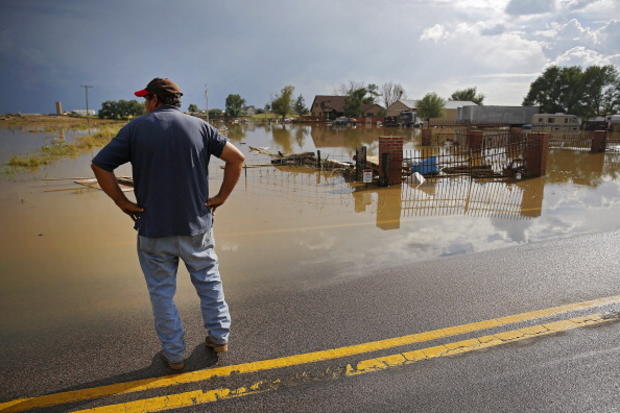2013 Flood Victims Urged To Monitor Spring Runoff
DENVER (CBS4) - Near record snowfall across Colorado's northern and central mountains has set the stage for potential flooding this spring, especially in areas that were hardest hit by last September's historical flood.
Two big wildcards will ultimately determine what impacts we see from snowmelt; temperature and precipitation.
Click here to see some of Colorado's most historical flood events.
TEMPERATURE
Regardless of what happens with temperature trends over the next several weeks, the risk for flooding is elevated because of heavy winter snow.
The best case scenario for the least amount of impact will be for a gradual warming trend through April and May, allowing snow to melt at a steady pace. That would give rivers and creeks a chance to handle the increased flow of water.
A bad scenario for the flood outlook would be if we see a fast and prolonged warm up, which would cause rapid snowmelt that could potentially overwhelm streams.
PRECIPITATION
This season has brought an unusual situation to Colorado because of the high amount of mountain snow that has already fallen. Typically, we root for more mountain snow because its good for our water supply.
But this year, we find ourselves in a tricky spot, because while more mountain snow is good, depending on what happens with future weather patterns and the temperature, it could make the flood outlook change quickly for the worse.
FOOTHILLS FACE UNKNOWN FLOOD THREATS
Unlike the past, there is a new "unknown" in this year's flood forecast, especially for those living in the Front Range foothills, where last year's flood waters either changed or moved many stream channels.
Large amounts of debris and sediment left behind could change how streams respond to snowmelt this year.
Another hazard in the foothills is the potential for landslides and rock slides because last year's heavy rain destabilized many hillsides and steep slopes.
ALL WATERS LEAD TO SOUTH PLATTE RIVER
While there are a lot of unknowns in the flood forecast over the next several weeks, one thing we do know is that all waters in north-central and northeast Colorado, east of the Continental Divide, eventually flow into the South Platte River.
Much like we saw last fall, if the waters flow fast and all at once, residents of northeast Colorado could also see river flooding along the South Platte River.




